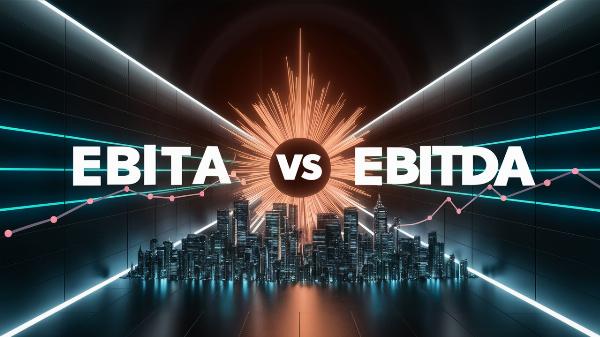EBITA vs EBITDA: Which Is the Better Indicator for Your Business?

Understanding EBITA vs. EBITDA: Making the Best Choice for Your Business
In the world of business finance, understanding key metrics is crucial for making informed decisions. One of the common dilemmas faced by business owners and financial analysts is choosing between EBITA and EBITDA as a measure of a company’s profitability. Both metrics serve as valuable tools in financial analysis, but their differences can significantly impact business strategy and decision-making.
What are EBITA and EBITDA?
EBITA stands for Earnings Before Interest, Taxes, and Amortization. It provides a snapshot of a company's operational efficiency by excluding interest, taxes, and amortization expenses. EBITDA, on the other hand, stands for Earnings Before Interest, Taxes, Depreciation, and Amortization. It goes a step further by also excluding depreciation expenses. Both metrics are used to assess a company's financial performance, but the choice between them depends on the specific needs and context of the analysis.
Why Use EBITA?
EBITA is particularly useful for companies that have significant amortization expenses. By excluding these non-cash expenses, EBITA provides a clearer picture of the company’s cash flow and operational efficiency. This metric is especially valuable for businesses with substantial intangible assets that are amortized over time, such as patents or trademarks.
The Benefits of EBITDA
EBITDA, by excluding both depreciation and amortization, offers a more comprehensive view of a company’s operational performance without the impact of capital structure and tax environments. This makes it a popular choice for comparing companies within the same industry, as it levels the playing field by removing variables related to capital expenditures. For businesses in capital-intensive industries, EBITDA can be a critical metric for understanding true operational profitability.
Choosing the Right Metric for Your Business
The decision to use EBITA or EBITDA should be based on the specific financial aspects you need to analyze. For instance, if your business has high intangible asset amortization, EBITA might be more relevant. Conversely, if you want to compare operational performance without the noise of depreciation and amortization, EBITDA could be the better choice.
Practical Applications in Business Strategy
Understanding the nuances between EBITA and EBITDA can influence various business strategies, from investment decisions to performance evaluations. For example, investors often look at EBITDA to gauge a company’s earning potential free from non-operational influences. On the other hand, EBITA can be crucial for businesses focusing on their cash flow and operational efficiency, particularly those with significant intangible assets.
Decoding the Acronyms: What EBITA and EBITDA Stand For
In the world of business finance, acronyms such as EBITA and EBITDA are frequently used to assess a company’s financial performance. Understanding what each represents is crucial for investors, managers, and analysts who rely on these metrics for decision-making.
EBITA stands for Earnings Before Interest, Taxes, and Amortization. This metric provides insight into a company’s operational profitability by removing the impacts of financing and accounting decisions. EBITA focuses on the core operations of a business by stripping out the expenses related to interest on debt, taxes owed to the government, and amortization of intangible assets. Amortization typically deals with spreading out the cost of intangible assets, like patents or software, over their useful lives.
EBITDA, on the other hand, stands for Earnings Before Interest, Taxes, Depreciation, and Amortization. Similar to EBITA, EBITDA offers a view of a company’s operational performance without the effects of interest, taxes, and amortization. However, it goes a step further by also excluding depreciation, which is the reduction in the value of physical assets over time. This additional exclusion makes EBITDA a popular tool for evaluating companies with significant investments in physical assets, like manufacturing equipment or real estate.
Conclusion
Both EBITA and EBITDA have their merits and are valuable tools in financial analysis. The key is to understand their differences and apply the one that aligns best with your business objectives. By leveraging these metrics appropriately, businesses can gain deeper insights into their financial health and make more informed strategic decisions.
For a more in-depth exploration of these metrics and their implications, check out the comprehensive article "EBITA vs. EBITDA: Which is Better for Business?".
This content is designed to be informative, engaging, and encourages readers to visit the original article for more detailed information, thus creating an effective backlink.
Note: IndiBlogHub features both user-submitted and editorial content. We do not verify third-party contributions. Read our Disclaimer and Privacy Policyfor details.







